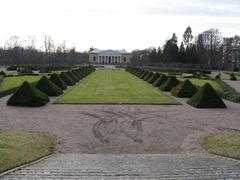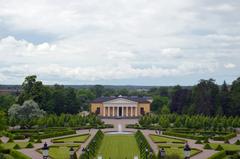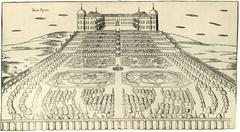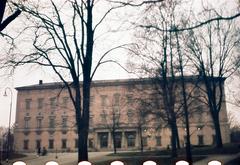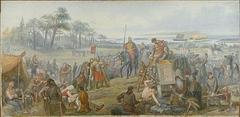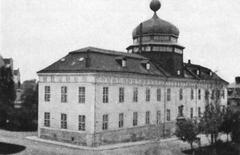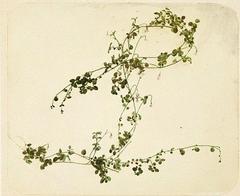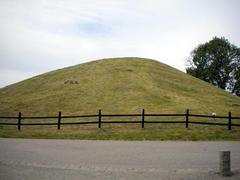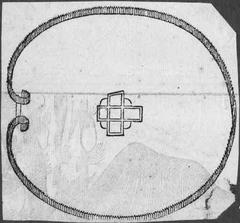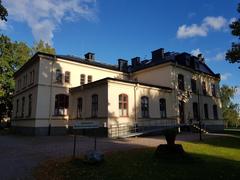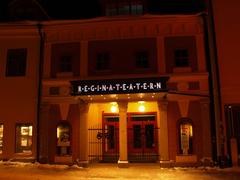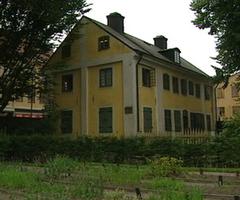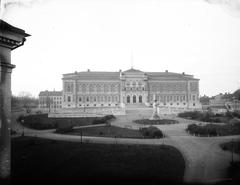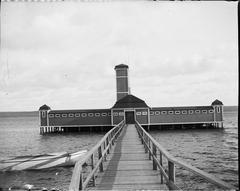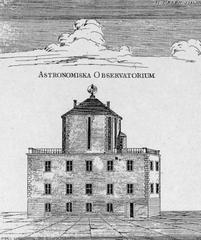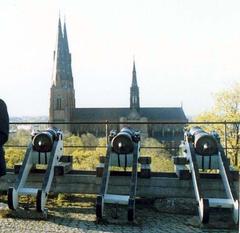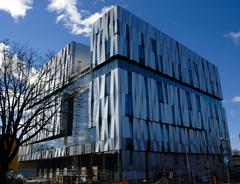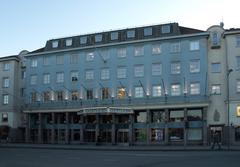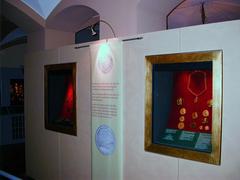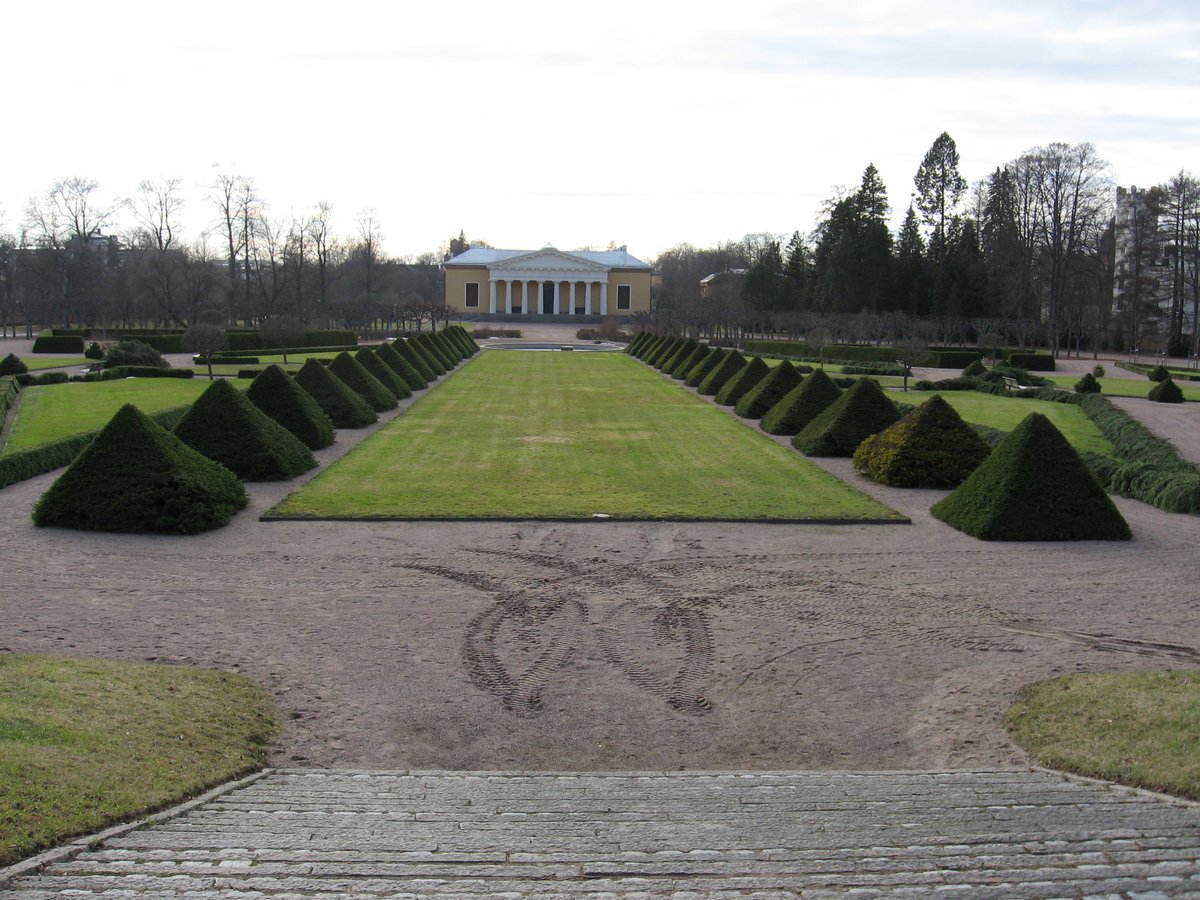
Uppsala Botanical Garden: Visiting Hours, Tickets, and Complete Guide to Uppsala’s Historical Sites
Date: 14/06/2025
Introduction: The Living Legacy of Uppsala Botanical Garden
Located at the heart of Uppsala, Sweden, the Uppsala Botanical Garden is one of Scandinavia’s most celebrated horticultural and historical sites. Established in 1655, the garden has been shaped by pioneering scientists like Olaus Rudbeck the Elder and Carl Linnaeus, growing into a vibrant center for botanical research, conservation, and public enjoyment. Today, the garden houses over 7,000 plant species, rare historical trees, and a series of elegant Baroque landscapes that draw plant enthusiasts, families, and cultural travelers from around the world.
This comprehensive guide details everything you need to know for a rewarding visit: history, opening hours, ticketing, accessibility, guided tours, amenities, nearby attractions, and essential travel tips.
Table of Contents
- Historical Overview
- Scientific, Educational & Cultural Significance
- Visiting Information
- Main Attractions
- Frequently Asked Questions (FAQ)
- Plan Your Visit
- Sources and Further Reading
Historical Overview
Early Foundations: The Rudbeckian Era (1655–1702)
Founded in 1655 by Olaus Rudbeck the Elder, the original Uppsala Botanical Garden served as Sweden’s first university botanical garden. Its primary mission was to aid medical and botanical education, reflecting the 17th-century European emphasis on medicinal plants and the natural sciences. By the century’s end, the garden showcased 1,800 species—a remarkable collection for its time. After a devastating fire in 1702, the garden entered a period of decline.
The Linnaean Transformation (1741–1778)
Revitalization came in 1741 under Carl Linnaeus, the renowned founder of modern taxonomy. As director, Linnaeus reorganized the garden’s collections according to his revolutionary binomial classification system and published Hortus Upsaliensis (1748), a detailed account of the garden’s layout and species. Under his leadership, the garden expanded to 2,100 species and became a beacon for botanical research and education (Uppsala University Botanical Garden).
Relocation and Baroque Expansion (1787–1802)
In the late 18th century, Carl Peter Thunberg, Linnaeus’s successor, led the relocation of the garden to higher ground adjacent to Uppsala Castle. King Gustav III donated the castle’s formal Baroque gardens, which were then redesigned and expanded, preserving the symmetrical parterres created by Carl Hårleman in 1744. This move established the garden’s present grandeur and proximity to other key Uppsala landmarks (Visit Sweden).
19th–20th Century Developments and Modernization
Over the 19th and 20th centuries, the garden evolved with new greenhouses, the iconic Linneanum complex, and expanded public engagement. In the 1930s, tropical greenhouses were added. The garden and Linneanum were declared national monuments in 1935, reflecting their enduring cultural and scientific significance. Restoration efforts in the late 20th century returned the Baroque gardens and Linnaeus Garden to their historical designs (Uppsala University).
Scientific, Educational & Cultural Significance
Academic Contributions
The Uppsala Botanical Garden operates as a living laboratory for Uppsala University and the international scientific community. Its collections are central to research in taxonomy, ecology, genetics, and conservation. The garden’s plant database supports global research and student education (Uppsala University).
Conservation Initiatives
The garden is a leader in plant conservation, participating in international seed exchange programs and safeguarding rare and endangered species. Its living collections are vital genetic reservoirs for both research and long-term ecological preservation (Uppsala University).
Linnaean Heritage and Swedish Identity
Together with the Linnaeus Garden and Linnaeus’ Hammarby, the Uppsala Botanical Garden forms a trio of national sites commemorating Carl Linnaeus. The Baroque layout, historic laurel trees, and Linnaeus-inspired traditions symbolize Sweden’s scientific achievements and cultural pride (Visit Sweden).
Public Engagement and Events
The garden is a beloved public space, hosting concerts, art exhibitions, flower festivals, and educational workshops. Its tranquil lawns and scenic views of Uppsala Castle make it a favorite for recreation and cultural gatherings (Destination Uppsala).
Visiting Information
Opening Hours & Tickets
- Outdoor Gardens: Open daily, year-round
- May–September: 7:00–21:00
- October–April: 7:00–19:00
- Note: Some gates close during winter months; main access remains available (Uppsala University)
- Tropical Greenhouse & Orangery (Linneanum):
- Open Tuesday–Sunday, with seasonal variations
- Closed on major public holidays and Midsummer Eve
- Café Victoria: Open May–September
Admission:
- Outdoor gardens: Free
- Tropical Greenhouse: SEK 60 (approx. $6 USD)
- Guided tours: SEK 60, includes greenhouse entry
- Special exhibitions and events: Additional fees may apply (Uppsala University)
Tickets: Purchase at the Tropical Greenhouse or book guided tours in advance via Biljetto. Some monthly tours are only available on-site and cannot be pre-booked.
Accessibility
- Wheelchair-accessible paths and restrooms throughout most of the garden
- Assistance dogs are welcome; pets allowed on leash in outdoor areas
- Detailed accessibility information and support available at the official website
How to Get There
- Address: Villavägen 8, 752 36 Uppsala
- On Foot/Bicycle: A short walk or cycle from Uppsala city center; bike racks available
- Public Transport: Numerous city bus lines stop nearby
- Car: Limited parking; public transport or cycling recommended (destinationuppsala.se)
Facilities and Amenities
- Café Victoria: Seasonal café with outdoor seating and locally sourced pastries (destinationuppsala.se)
- Museum Shop: Botanical-themed gifts, books, and souvenirs in the Tropical Greenhouse
- Restrooms: Available throughout the garden
- Picnic Areas: Designated spaces for picnicking; please respect plantings and research plots
- Wi-Fi: Limited within the garden; available at city cafés and public libraries (destinationuppsala.se)
- Family-Friendly: Open lawns, stroller-friendly paths, and child-friendly amenities
- Dogs: Allowed on leash in outdoor areas
Visitor Rules and Etiquette
- Photography: Permitted for personal use; commercial photography requires permission
- Picnics: Allowed only in designated areas
- No Smoking: Prohibited throughout the garden
- Bikes/Scooters: Park outside garden gates
Main Attractions
Baroque Garden
The garden’s centerpiece, a meticulously restored Baroque parterre, features geometric flower beds, clipped hedges, and symmetrical walkways leading to grand views of Uppsala Castle. Seasonal plantings create vibrant displays year-round (Uppsala University Botanical Gardens).
Orangery (Linneanum)
This 200-year-old neoclassical greenhouse houses Mediterranean and subtropical plants, including historic laurel trees ordered by Linnaeus. It also serves as a venue for art exhibitions and cultural events (Trip101).
Tropical Greenhouse
Explore diverse ecological zones, from rainforests to deserts. Highlights include the giant water lily, rare orchids, palms, and economically important plants like coffee and cacao (Trip101).
Systematic and Thematic Plantings
Reflecting Linnaeus’s legacy, these beds are arranged by plant families and ecology, supporting research, conservation, and public education (Uppsala University Botanical Gardens).
Arboretum
A collection of mature trees and shrubs from around the world, the arboretum is particularly stunning in autumn with its array of colorful foliage.
Seasonal Highlights & Events
Concerts, art exhibitions, plant fairs, and educational workshops animate the garden year-round (Destination Uppsala).
The Linnaeus Garden and Museum
A short walk away, this reconstructed 18th-century garden and museum offer further insight into Linnaeus’s groundbreaking work (Uppsala University Botanical Gardens).
Frequently Asked Questions (FAQ)
Q: What are the Uppsala Botanical Garden opening hours?
A: Outdoor gardens are open year-round: 7:00–21:00 (May–September), 7:00–19:00 (October–April). Greenhouses have more restricted hours—check the official website for details.
Q: Is there an entry fee?
A: Outdoor gardens are free. The Tropical Greenhouse and some special events require tickets.
Q: Can I bring my dog?
A: Yes, dogs are permitted in outdoor areas if leashed; assistance dogs are always welcome.
Q: Are guided tours available in English?
A: Most tours are in Swedish, but some information and tours are available in English; staff are happy to assist international visitors.
Q: Is the garden accessible for visitors with mobility issues?
A: Most areas are wheelchair accessible; some historic paths may present challenges.
Q: Where is the garden located and how can I get there?
A: Adjacent to Uppsala Castle, easily reached by foot, bicycle, public transport, or car (limited parking).
Plan Your Visit
- Visit in late spring through early autumn for peak blooms and events.
- Early mornings and weekdays are quieter and ideal for photography.
- Check the events calendar for concerts, workshops, and seasonal highlights.
- Download the Audiala app for interactive maps and audio-guided tours.
- Combine your visit with nearby attractions like Uppsala Castle, Uppsala Cathedral, and the Linnaeus Museum for a full cultural experience.
Summary
The Uppsala Botanical Garden is a living museum uniting centuries of botanical history, scientific advancement, and Swedish cultural heritage. With free access to its expansive grounds, engaging exhibitions, and a dynamic calendar of public events, it is an essential destination for visitors of all ages and backgrounds.
Always check the official website for the latest on opening hours, ticketing, and special events. Enhance your experience with the Audiala app, and follow the garden’s social media channels for real-time updates and seasonal inspiration.
Step into the Uppsala Botanical Garden and discover the intersection of nature, science, and culture in one of Sweden’s most cherished green spaces.
Sources and Further Reading
- Uppsala Botanical Garden Visiting Hours, Tickets & Historical Overview, 2025, Uppsala University (Uppsala University Botanical Garden)
- Uppsala Botanical Garden: Visiting Hours, Tickets, and Historical Insights, 2025, Uppsala University (Uppsala University Botanical Garden)
- Exploring Uppsala Botanical Garden: Visiting Hours, Tickets & Nearby Historical Sites, 2025, Destination Uppsala (Uppsala University Botanical Gardens)
- Uppsala Botanical Garden Visiting Hours, Tickets, and Visitor Guide, 2025, Uppsala University (Uppsala University Botanical Garden)
- Visit Sweden - Uppsala, 2025 (Visit Sweden)
- Destination Uppsala, 2025 (Destination Uppsala)
- Trip101 - Things to Do in Uppsala, 2025 (Trip101)
